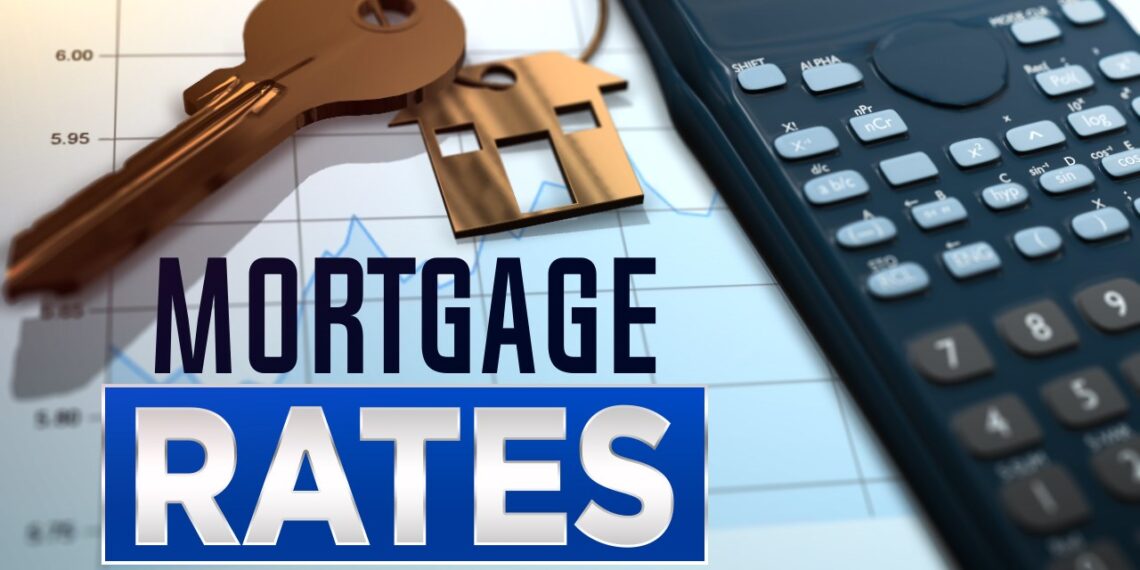The average long-term mortgage rate has been observed in the United States has increased to its highest level in more than 2 decades, which is bad news for prospective homeowners who are already struggling to navigate a housing market that is nonetheless competitive due to a lack of available properties.

Rising interest rates and mortgage home prices surging as housing borrowing costs rise due to inflation and financial crisis concept as a house hit by a finance graph arrow with 3D render elements. (Source: The Sumter Item)
Highest Increase in US Mortgages has Reached 7%
In a published article from The Journal Record, according to mortgage buyer Freddie Mac, the benchmark 30-year home loan’s average rate has increased from 6.96% last week to 7.09% this week. The rate was on average 5.13% a year ago. The average rate has the highest increase in US mortgages for four weeks running, reaching 7.13% since early April 2002. The last time the average rate exceeded 7% was in November of last year when it reached 7.08%. Borrowers’ monthly expenses might increase by hundreds of dollars due to high-interest rates, which limits how much they can borrow in a market that is already out of reach for many Americans.
According to Bright MLS chief economist Lisa Sturtevant, hitting the 7% mortgage rate threshold again might cause a severe housing market contraction this fall as prices rise even higher than a year ago in several regions. The latest rate hike has boosted the 10-year Treasury yield, which has been above 4% this month and rising. The yield, which lenders use to set mortgage and other lending rates, reached its highest level since October on Thursday morning and is virtually back to 2007 levels.
Bond markets are responding to more evidence showing the U.S. economy’s resiliency, raising the yield. This might suppress inflation and allow the Fed to keep interest rates higher. Sam Khater, chief economist at Freddie Mac, said the 10-year Treasury yield has risen, raising mortgage rates as the economy performs better than predicted. Demand has been affected by affordability, but insufficient inventory is the greatest obstacle to home sales.
READ ALSO: Demand for Single-family House for Rent in Houston Increases
Highest Increase in US Mortgages Due to Inflation Rate
The fed funds rate reached its highest level in 22 years as a result of the Federal Reserve’s 11 increases to its benchmark interest rate since March 2022 due to strong inflation. Mortgage rates typically follow the yield on the 10-year Treasury note rather than necessarily reflecting Fed rate rises. Mortgage interest rates can be affected by investor expectations for future inflation, the demand for U.S. Treasury securities abroad, and the Fed’s interest rate decisions.
When compared to two years ago, when it was only 2.86%, the average rate on a 30-year mortgage is still more than twice as high. These absurdly low-interest rates caused a surge in home purchases and refinancing. Since homeowners who locked in those lower borrowing costs two years ago are now hesitant to sell and jump into a higher rate on a new property, the sharply higher rates are adding to a shortage of available properties.
Home sales in the first half of this year were down 23% primarily due to a lack of housing availability. The typical interest rate for 15-year fixed-rate mortgages, which are popular among homeowners refinancing, increased from 6.34% last week to 6.46% this week. According to Freddie Mac, the average was 4.55% a year ago.
READ ALSO: Apartment Rent Cost Reached a Record-Breaking Level in New York City

















































